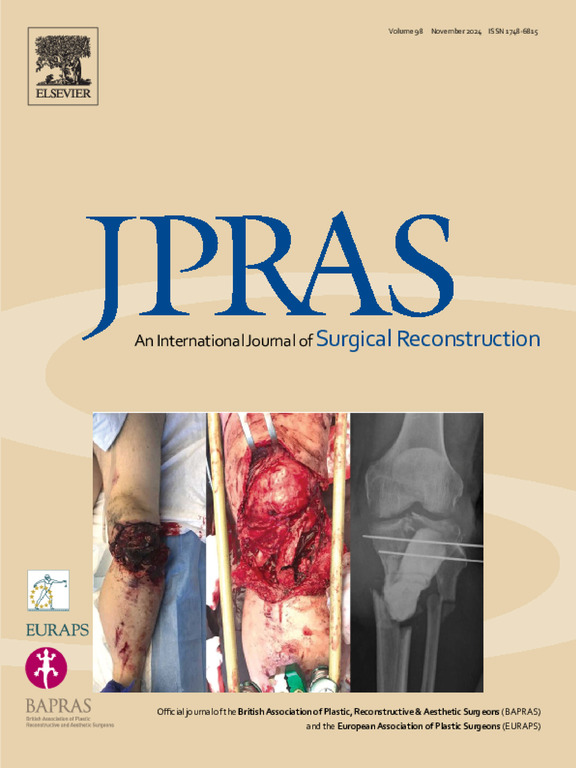Assessing the predictive accuracy of ChatGPT-based image analysis in forecasting long-term scar characteristics from 3-month assessments – A pilot study
IF 2
3区 医学
Q2 SURGERY
Journal of Plastic Reconstructive and Aesthetic Surgery
Pub Date : 2025-03-13
DOI:10.1016/j.bjps.2025.03.021
引用次数: 0
Abstract
Introduction
Scarring significantly impacts patient quality of life, yet traditional assessments often rely on subjective evaluations, resulting in variability in predictions. This study aimed to evaluate the predictive accuracy of a Smart Image Analysis ChatGPT model in forecasting scar characteristics.
Methods
This single-institution prospective cohort study included 40 patients who underwent plastic surgery. Scar images were captured at 3 and 12 months, assessing characteristics such as vascularity, pigmentation, height, and width. The ChatGPT model predicted binary outcomes (good vs. bad scars) and continuous outcomes. Predictive accuracy was measured using metrics including mean absolute error (MAE), mean squared error (MSE), root mean squared error (RMSE), and R-squared (R²).
Results
The model achieved an overall accuracy of 97.5% for binary classifications of scars. McNemar's test confirmed no significant differences between predicted and actual outcomes. For continuous outcomes, the MAE was 0.65, with an MSE of 0.9 and RMSE of 0.95, indicating moderate accuracy. Vascularity predictions yielded an R² of 0.234, whereas height and width showed stronger correlations with R² values of 0.857 and 0.956, respectively. Statistically significant differences in paired t-tests were observed for pigmentation (t = 4.356, p = 9.319e-05) and width (t = 2.896, p = 0.0062).
Conclusion
The Smart Image Analysis ChatGPT model demonstrates excellent predictive accuracy in binary scar classification and provides valuable insights for scar characteristics. Further refinement is necessary for improving predictions of dynamic features such as vascularity.
求助全文
约1分钟内获得全文
求助全文
来源期刊
CiteScore
3.10
自引率
11.10%
发文量
578
审稿时长
3.5 months
期刊介绍:
JPRAS An International Journal of Surgical Reconstruction is one of the world''s leading international journals, covering all the reconstructive and aesthetic aspects of plastic surgery.
The journal presents the latest surgical procedures with audit and outcome studies of new and established techniques in plastic surgery including: cleft lip and palate and other heads and neck surgery, hand surgery, lower limb trauma, burns, skin cancer, breast surgery and aesthetic surgery.

 求助内容:
求助内容: 应助结果提醒方式:
应助结果提醒方式:


